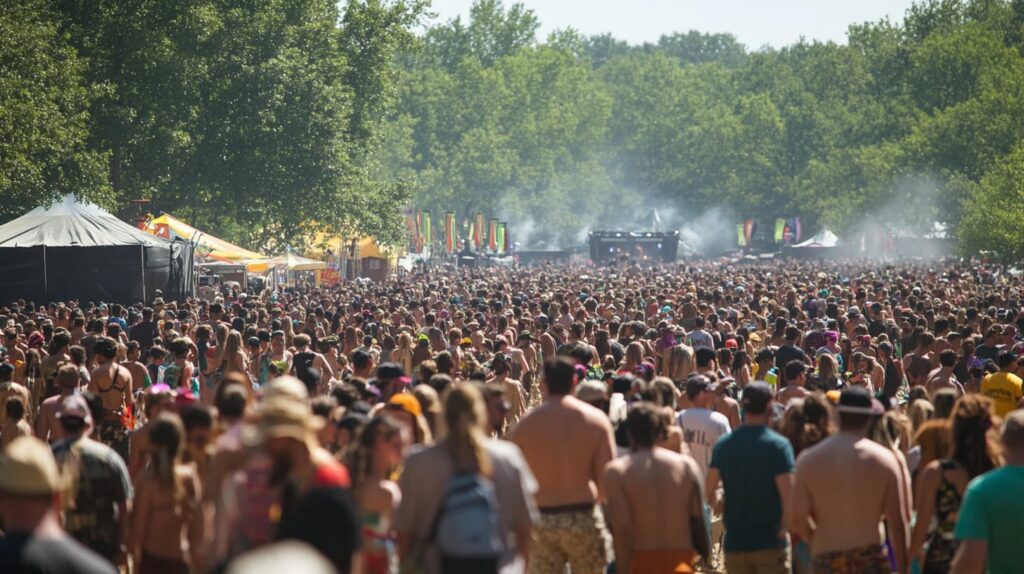Mastering the Art of Festival Safety Beyond the Beat
The pulsating energy of thousands of festival-goers moving in unison to thunderous bass lines creates an electrifying atmosphere that defines modern music festivals. Yet beneath this sensory spectacle lies an intricate web of safety protocols and crowd management strategies that can mean the difference between an unforgettable celebration and a catastrophic incident.
Recent years have witnessed both the tremendous growth of festival culture and sobering reminders of the paramount importance of safety planning, with global festival attendance reaching record numbers alongside tragic incidents that have reshaped industry standards.
The New Frontier of Festival Safety
The landscape of festival safety has evolved dramatically from the days of simple barrier systems and walkie-talkies. Today’s festival safety framework integrates cutting-edge technology with time-tested crowd management principles. Major events now routinely handle crowds of 50,000-plus attendees, necessitating sophisticated approaches to ensure everyone’s wellbeing. Recent statistics reveal that well-planned festivals experience 60% fewer safety incidents than those operating with basic safety measures, highlighting the critical nature of comprehensive planning.
The Foundation of Festival Excellence
Festival safety begins long before the first beat drops. Modern event planning requires a meticulous examination of every potential risk factor, from ground stability to crowd flow dynamics. Successful safety architecture combines three crucial elements: site optimization, capacity management, and emergency preparedness.
The process starts with sophisticated site analysis, utilizing 3D modeling and crowd simulation software to identify potential bottlenecks and optimize traffic flow. These tools help planners understand how thousands of people will move through the space, allowing them to design layouts that naturally prevent dangerous crowd density situations. Advanced weather monitoring systems integrate with emergency protocols, enabling rapid response to environmental threats – a capability that proved invaluable during the 2023 festival season when several major events successfully evacuated tens of thousands of attendees ahead of severe weather.
The Human Touch
While technology plays an increasingly vital role in festival safety, the human element remains irreplaceable. Modern security teams undergo specialized training in crowd psychology, cultural sensitivity, and de-escalation techniques. These skills prove essential in managing the complex social dynamics of large gatherings where emotions run high and circumstances can change rapidly.

Effective crowd management requires understanding the delicate balance between maintaining order and preserving the festival atmosphere. Security personnel must be visible enough to provide reassurance but subtle enough not to dampen the celebratory spirit. This approach has led to the development of “soft security” techniques, where staff are trained to read crowd dynamics and intervene preventively rather than reactively.
The Silent Guardian
Festival infrastructure has evolved into a sophisticated system of interconnected elements designed to protect attendees while enhancing their experience. Modern festivals employ smart barriers that can monitor crowd pressure in real-time, sending alerts to control centers when density reaches dangerous levels. These systems work in concert with AI-powered cameras that can identify potential problems before they escalate.
Equally important is the strategic placement of essential services. Medical facilities, water stations, and rest areas are positioned using data-driven approaches that ensure optimal accessibility while preventing crowding. The implementation of these strategies has led to a measurable decrease in heat-related incidents and significantly improved response times for medical emergencies.
The Lifeline of Safety
Clear, timely communication serves as the cornerstone of effective festival safety management. Modern events employ multi-layered communication systems that can reach attendees through various channels simultaneously. Digital displays, mobile apps, and social media updates work in tandem with traditional PA systems to ensure critical information reaches everyone quickly.
Internal communication has similarly evolved, with command centers utilizing AI-assisted decision-making tools to coordinate responses across multiple teams. These systems process data from numerous sources – crowd density sensors, weather stations, and security reports – to provide real-time situational awareness and predictive insights.
The Science of Crowd Flow
Understanding crowd dynamics has become increasingly scientific, with festivals employing sophisticated modeling techniques to predict and manage movement patterns. These models consider factors ranging from music schedules to food vendor locations, creating comprehensive crowd flow maps that help prevent dangerous situations before they develop.
Recent innovations include dynamic pathway systems that can be reconfigured in real-time based on crowd density data, and smart signage that updates automatically to redirect foot traffic away from congested areas. These systems have proven particularly effective during peak movement times, such as between performances or during venue entry and exit.
Emergency Response
Despite the best preventive measures, emergencies can still occur. Modern festival emergency response protocols integrate traditional crisis management with advanced technology to ensure rapid, effective action when needed. Command centers can instantly communicate with all security personnel, medical teams, and even directly with attendees through mobile apps.
Emergency routes are designed using sophisticated evacuation modeling software that accounts for various scenarios, from weather emergencies to security threats. These plans are regularly tested through simulations and updated based on real-world experiences, creating an evolving framework of emergency preparedness.
Looking Aheadof Festival Safety
The horizon of festival safety continues to expand with emerging technologies and evolving best practices. Biometric systems, drone surveillance, and advanced weather prediction models are already being integrated into safety protocols at leading events. However, the future of festival safety lies not just in technology but in the growing understanding that safety and experience enhancement are intrinsically linked.
The most successful festivals of tomorrow will be those that seamlessly integrate safety measures into the fabric of the event experience. This integration requires constant innovation, unwavering commitment to best practices, and most importantly, a deep understanding that the ultimate goal is not just to prevent incidents but to create an environment where millions can safely share in the transformative power of live music.
This comprehensive approach to festival safety marks a new chapter in event management, where the boundary between safety measures and experience enhancement becomes increasingly blurred. As festivals continue to grow in scale and complexity, this evolution of safety practices ensures that the beat goes on – safely, securely, and spectacularly.
